Note: This website was automatically translated, so some terms or nuances may not be completely accurate.
So what's the real deal? Future superfoods: Insect Cuisine
This series was originally planned to start in March and has been in preparation since last year.
We hope you'll read it while imagining the "beyond" that lies after overcoming the huge wall of COVID-19 standing before us.
The first installment of the Food Lab Researcher's Future Food Project series, "Food Lab Researcher Goes There! Future Trends Experience Report," focuses on the theme of "insect cuisine." I, Kato, a Food Lab researcher, dove right in!

First, what comes to mind when you hear "insect cuisine"?
I doubt many people think "It looks delicious" or "My mouth is watering." Most reactions are probably "Gross," "Weird," or "No way."
Behind these reactions, I suspect there's a fundamental question: "Why would we need to eat insects in the first place?"
Why is insect cuisine gaining attention?
Most emerging food tech, including insect-based foods, is being developed to solve upcoming societal challenges. Insect-based foods are no exception, with a key focus being the response to the "protein crisis."
The "protein crisis" refers to the phenomenon where, due to global population growth and the expansion of the middle class, worldwide consumption of meat and fish continues to increase. By 2025-2030, the global supply of protein is projected to fall short of demand.
Insects, on the other hand, have an extremely low environmental impact when farmed for food, while being highly nutritious, especially in terms of protein. This makes them a solution gaining significant attention for this problem. (See figure below)
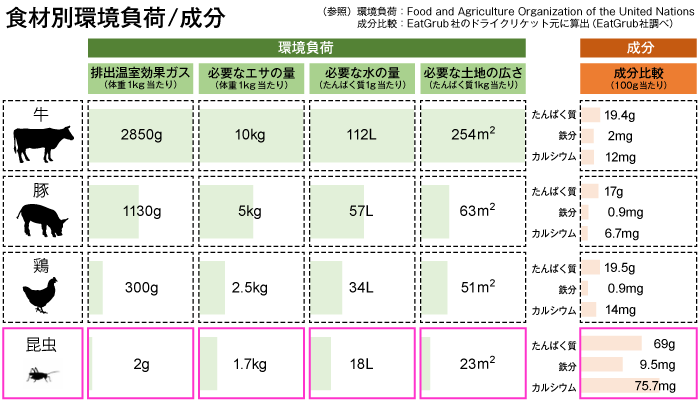
Nutrient Comparison: Calculated based on EatGrub's dried crickets (EatGrub research)
Furthermore, entomophagy has a long history, with over 2,000 insect species consumed across countries worldwide. This extensive history of consumption also serves as a guarantee of their safety as food.
For these reasons, you probably understand that insects are an excellent food source. Still, for many people, the honest feeling is likely, "I get the point about eating them, but I absolutely don't want to."
To answer your question, "So what's insect eating really like?", I decided to experience insect cuisine firsthand in Thailand, a country at the forefront of this trend.
An Insect-Hater Tries Insect Cuisine in Thailand
Before I begin my experience, I want to tell you something:
I actually dislike insects.
I haven't properly touched an insect since elementary school, and I've never wanted to touch one. Of course, I've never eaten one.
So, I'll focus on what I felt as someone like me went from eating insects for the first time to eventually being able to eat over 10 different kinds.
The Insanely High Bar of That First Bite
In Thailand, I planned to observe and experience insect cuisine in various settings—restaurants, packaged snacks, street stalls, markets. Since I was there for work, I initially thought I could just go to these places and easily try them.
However, I was completely shocked at the first insect wholesaler I visited in the market.
The mountains of insects piled high, their glossy black appearance, and their unexpectedly large size completely knocked me out. Honestly, I thought I never wanted to have anything to do with them for the rest of my life, let alone eat them.
Facing these insects, which looked like food from a completely different world, I felt a strong sense of despair about the prospect of eating them.
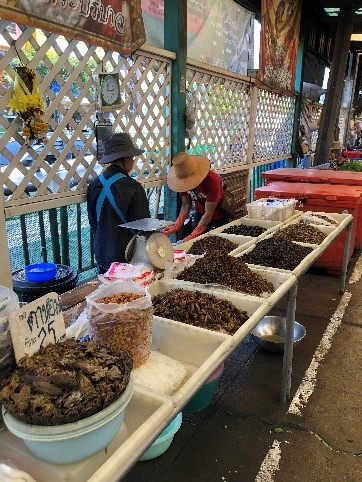


After seeing this market, I was completely flustered. I had planned to practice eating insects at a street stall before enjoying an insect restaurant at night, but I was completely intimidated by that too.
Even though the stall was less than a 10-minute taxi ride away, I deliberately walked over an hour in scorching heat exceeding 30 degrees Celsius. The entire way, I kept searching for ways to avoid eating it: "Can't I just leave without eating?" "Can't I just pretend I ate it for the report?" That's how strongly I felt pure terror and disgust at the thought of putting this unknown food called "insects" into my mouth.
Two saviors pushed me forward: "commercialization" and "word of mouth."
When I arrived at the location said to have an insect stall, I discovered it only opened at night.
Honestly, I was relieved I didn't have to eat them right then, but I also worried that if things continued like this, I might not be able to eat anything at the insect restaurant I planned to visit that night. After agonizing over it, I finally managed to eat these insect snacks first.
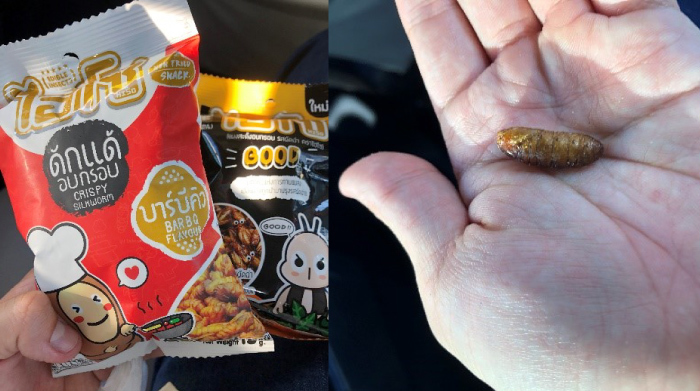
These snacks, sold even in Thai convenience stores, come in two varieties: silkworm pupae and crickets. I felt a strong aversion to eating insects, but I managed to eat them thanks to the "reassurance of a commercially packaged product."
Even if it's insects, packaged, commercially available food gives us a strong sense of safety and trust.
I ate the snack cautiously, but since it was BBQ flavored, it tasted somewhat like popcorn with a slight peculiar taste. The silkworm pupae had a unique flavor often described as "earthy," while the crickets tasted like shellfish, such as shrimp.
That said, these were dried, processed, commercially available insect snacks. It couldn't truly be called eating insects. My unease about the insect restaurant I was about to visit still lingered, but what really changed my mindset was word of mouth.
Next on my list was an experience at a world-leading, high-end insect cuisine restaurant.
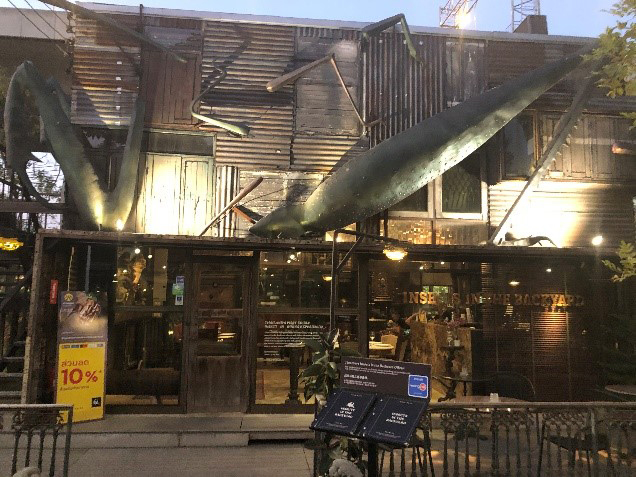
While riding in a taxi to the restaurant, I checked its reviews. People from all over the world were raving about it: "Truly amazing cuisine," "The insect ingredients really complement the dishes." Reading these, my anxiety vanished. Instead, I felt the same excitement and curiosity as waiting in line at a popular ramen shop – anticipation for a new delicious experience.
The power of these "reviews" was immense. I had brought a Japanese friend stationed in Thailand to this restaurant without mentioning the insect cuisine aspect. At first, he was quite repulsed upon learning it involved insects, but when I showed him the reviews, he surprisingly agreed to try it without hesitation.
The "reassurance of a commercialized product" and the "power of word-of-mouth" proved to be major help in overcoming that initial hurdle.
My feelings quickly adapted to the rapidly expanding world of insect cuisine.
At the restaurant, I ordered a full course featuring abundant insects. The meal included six dishes, plus the "Cricket Genovese Pasta" recommended in the word-of-mouth reviews. I also ordered two insect-based alcoholic drinks.

When the first nachos arrived, I felt a fresh surprise at something that's actually commonplace in insect restaurants: "Oh, the bugs are really neatly arranged on the plate." The beautiful presentation significantly reduced my resistance, and I accepted the first bite without hesitation.
My first thought after tasting the dishes was, "Wait, forget the insects—this is seriously delicious!"
・Crickets: A topping with a savory aroma reminiscent of crustaceans
・Bamboo worms taste like salty, fried potato-like accompaniments
・Ant eggs as a sauce with a smooth, creamy texture
Each element complemented the dish perfectly.
As I kept eating the delicious dishes that kept coming, I felt my resistance to eating insects steadily decrease. Even when the famous high-end insect ingredient, the giant water bug (top right in the photo), appeared, it was larger and more imposing than any other insect. Despite its appearance, which I felt resembled a cockroach a bit, it had an unexpectedly fruity flavor and was very tasty.
By the end of the full course, I had become so accustomed to the experience that I genuinely felt ready to try any insect that came my way.
Released from tension, pure curiosity about insect cuisine
After finishing my meal at the restaurant, having completely lost my resistance to insect cuisine, I wanted to try tasting insects more as ingredients themselves. So I headed to the insect food stall I had tried to visit during the day.
While the restaurant served meticulously prepared dishes, mostly fried, this stall simply grilled them roughly and sprinkled salt on top, allowing for a more authentic taste of the insects themselves.
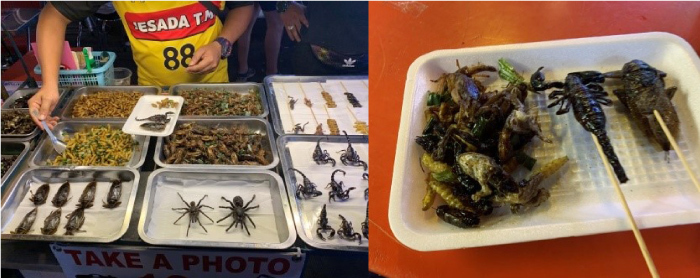
While many of the insect varieties were the same as those I'd eaten at the restaurant, I also tried scorpions and tarantulas here. My impression of eating these more authentic insects was that they had a strong, gamey flavor, quite earthy, and it was hard to call them delicious.
The scorpion, in particular, had such a strong, pungent odor that I almost had to spit it out. As for the tarantula, beyond the taste, the hairs on its surface were quite unpleasant, and I couldn't find it tasty either.
Honestly, the taste of real insects was a bit of a shock, but by the time I was eating them, I had no resistance. Instead, I felt strangely proud when European tourists around me stared at me curiously, finding it all quite novel.
In just half a day, my feelings about eating insects
"Fear/Despair ⇒ Tension/Anxiety ⇒ Liberation/Curiosity ⇒ Enjoyment."
Never before had I experienced such intense emotional shifts just from eating food; my insect-eating experience in Thailand was truly novel.
"For Insect Cuisine to Become a Future Business Opportunity"
Currently, even large corporations, not just startups, are beginning product development using insects domestically. It is expected that these activities will expand in the future.
On the other hand, the current reality is that 65% of people respond that they "feel aversion" towards eating insects, making it difficult to immediately translate this into business opportunities.

For insect-based foods to become a viable business opportunity domestically, three key points are essential.
First, "utilizing them as ingredients without being swayed by appearance."
This is because the primary reason people dislike insect-based foods is that "they look disgusting."
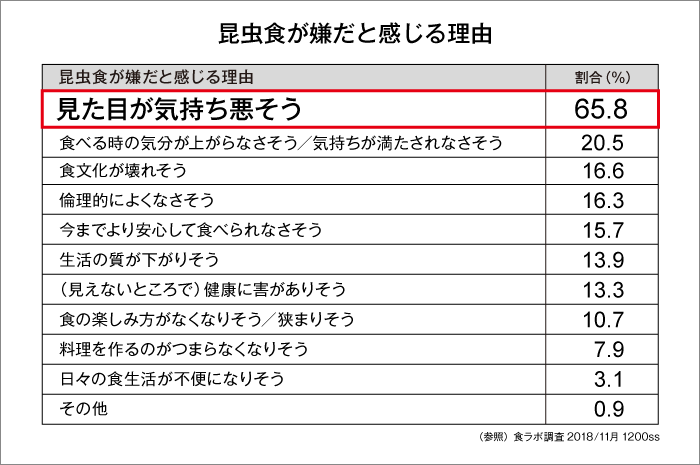
Honestly, if I hadn't been there for work, I probably wouldn't have been able to eat them either, intimidated by their appearance.
On the other hand, current insect food ventures are selling products like "Cricket Brownies" and "Silkworm Burgers," utilizing insects as ingredients or components, thereby minimizing visual resistance as much as possible. It's expected that such applications will expand going forward.
The second point is "making it genuinely delicious."
Fundamentally, for insect-based foods to establish themselves as a business, being delicious is the absolute prerequisite. If people hear that even unfamiliar ingredients like insects possess their own unique deliciousness, many will likely become interested.
Looking at the data, the most common reasons people currently express interest in insect-based foods are that it "seems like it could enrich food culture" and "seems like it could broaden the ways we enjoy food." Whether these ingredients can become delicious enough to pique people's curiosity about food is crucial.
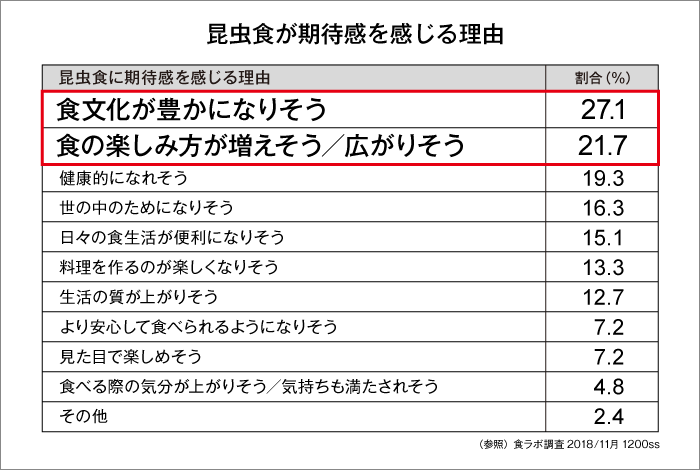
In Japan, there is an active movement to develop insects into delicious ingredients through selective breeding.
Third is "offering additional benefits as an ingredient."
While their beautiful appearance and delicious taste alone are enough to pique some people's interest, others still can't shake the unpleasant image associated with insects.
What about highlighting the health benefits to encourage even these people to try them? Insects are known to contain many health-promoting components. Silkworms, for example, contain not only beauty components effective for rejuvenation and weight loss but also health components beneficial against dementia and high blood pressure. Furthermore, it is said that adjusting the insects' feed can enable the incorporation of even more health-promoting components.
By further elucidating these health benefits of insects, the opportunities for insects as food ingredients will significantly expand.
I strongly believe insect-based foods have great potential to shed their image as "disgusting exotic fare" domestically and become a new business opportunity. I would be delighted if this article helps bring us even a little closer to a future where insect-based foods are commonplace.
Was this article helpful?
Newsletter registration is here
We select and publish important news every day
For inquiries about this article
Author

Sota Kato
Dentsu Inc.
Second Integrated Solutions Bureau
Planner
Responsible for planning and business creation based on marketing analysis across various sectors including food, automotive, daily necessities, and B2B.


